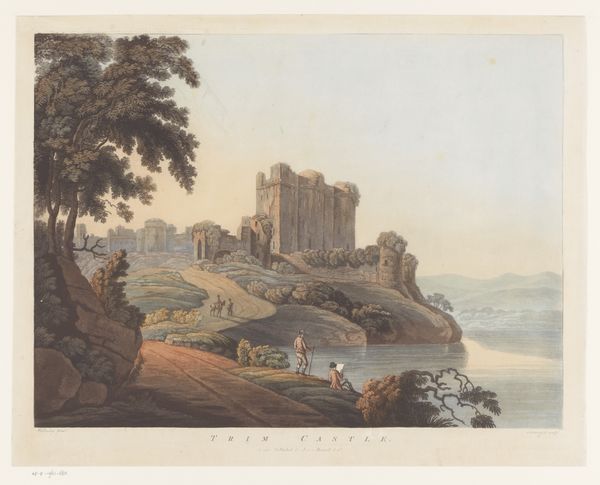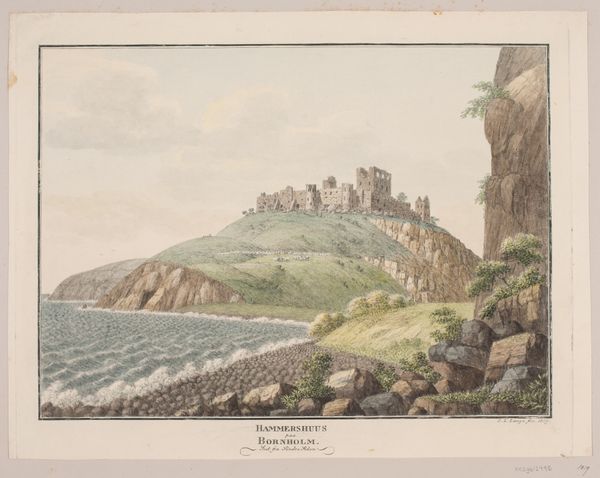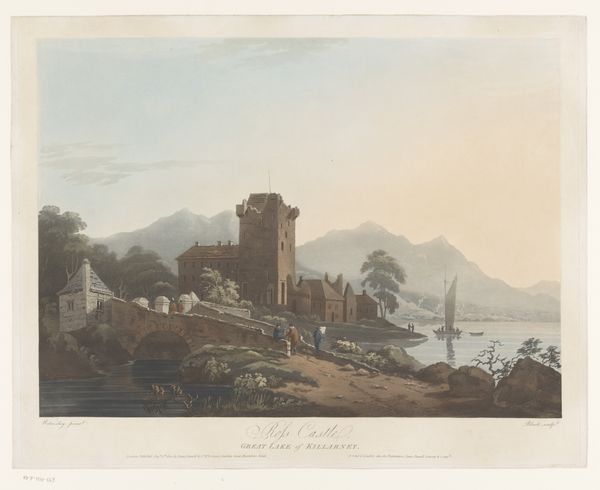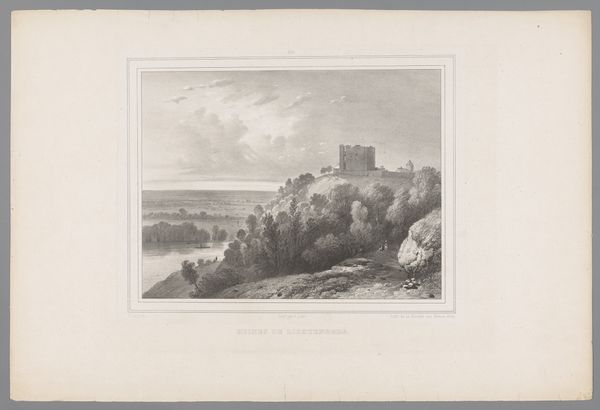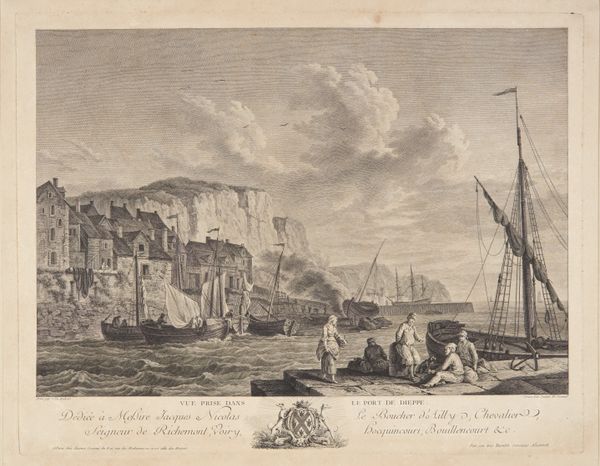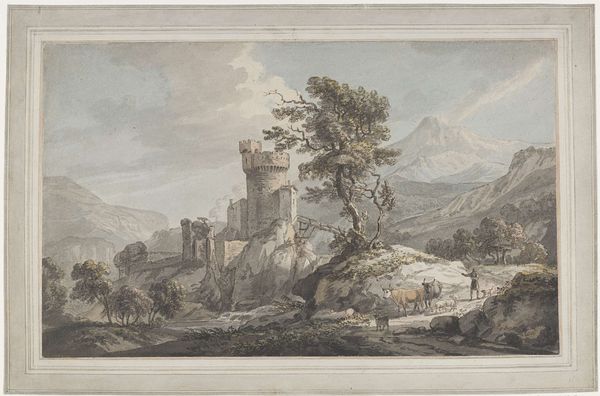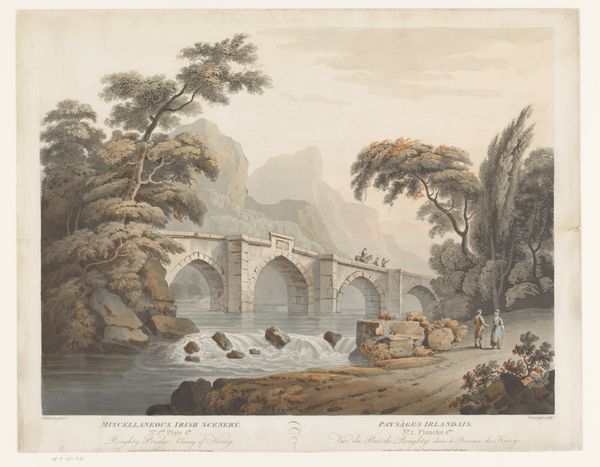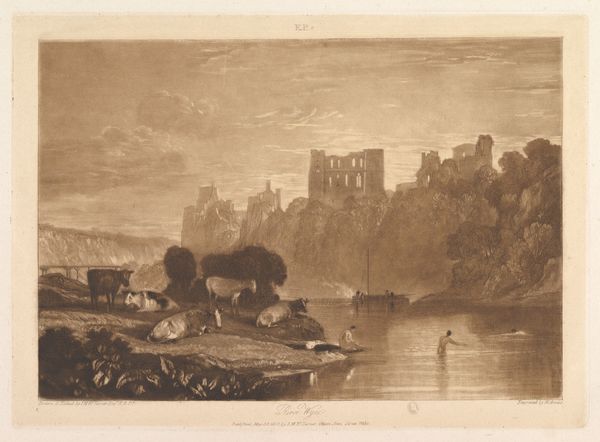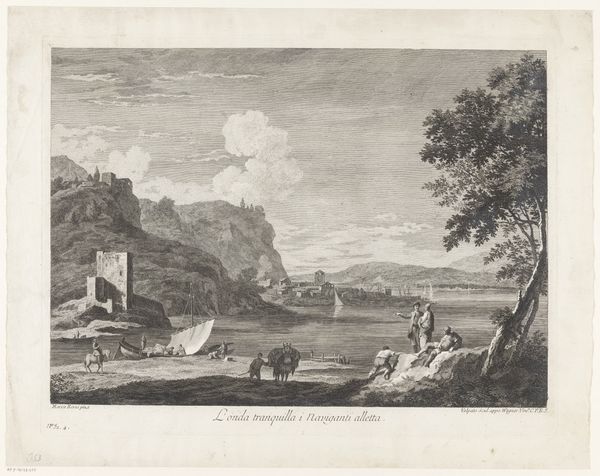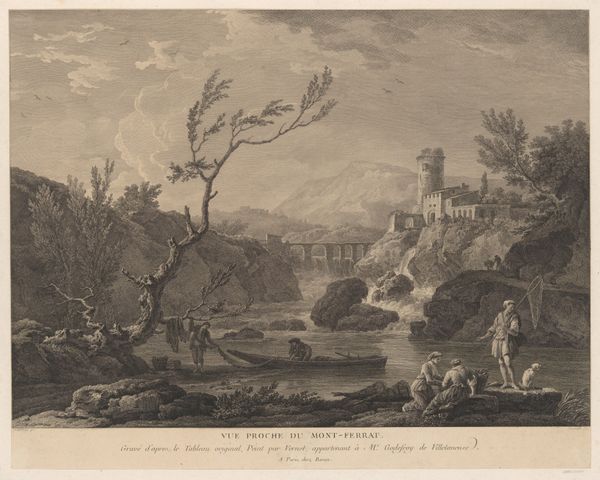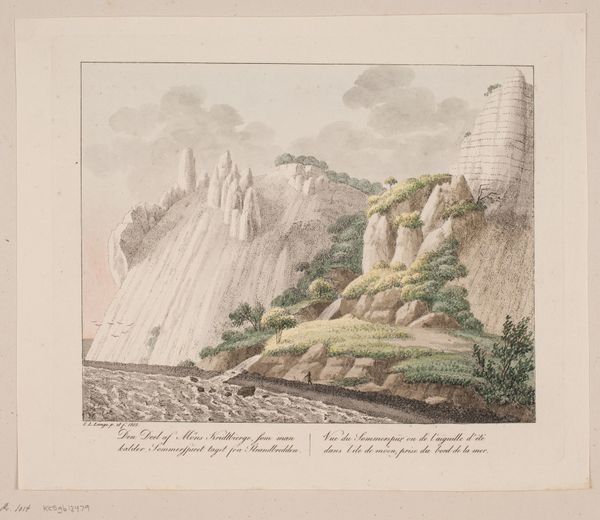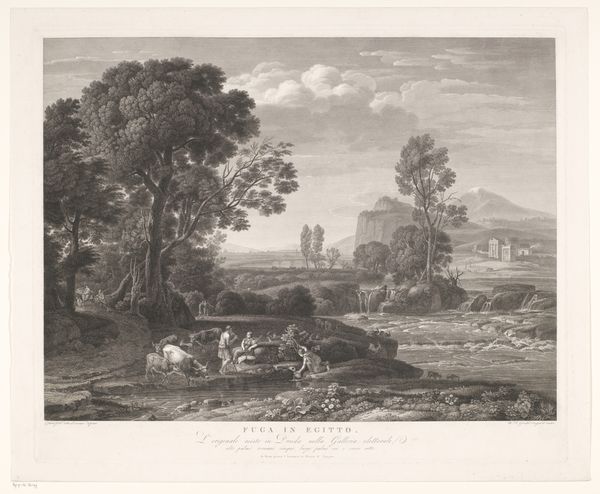
print, etching, watercolor
#
neoclacissism
# print
#
etching
#
landscape
#
river
#
watercolor
#
watercolour illustration
Dimensions: height 474 mm, width 588 mm
Copyright: Rijks Museum: Open Domain
Curator: This image captures the imposing silhouette of Trim Castle in Ireland. It's an etching with watercolor attributed to T. Cartwright and thought to have been created sometime between 1806 and 1808. Editor: It’s rather dreamlike, isn’t it? Almost like a faded memory. The colors are muted, the lines are soft. It feels distant and perhaps melancholic. Curator: That mood aligns, I think, with the context of the time. Anglo-Irish relations were, shall we say, complicated. Representations of Irish landscapes often served as both documentation and, at times, a veiled commentary on power and control. This view, while seemingly picturesque, also speaks to a history of conquest and the changing landscape of Irish identity under British rule. Editor: I'm drawn to the visual language of ruins. The castle itself, fragmented yet stoic, operates as a potent symbol. We see these figures on the periphery—tiny, almost reverent—but dwarfed by the imposing edifice behind them. It suggests the enduring power of history, how even in its decay, it shapes our present. Curator: Exactly. Castles carry so many symbolic meanings – strength, authority, sometimes oppression. How do you interpret the river in relation to the castle? Editor: Water is so often symbolic of change and movement, right? It softens the edges, erodes what’s solid. Perhaps it reflects the shifting power dynamics of the period, a constant tension between dominance and the undercurrents of Irish resilience. This wasn't simply a neutral landscape but an emotionally loaded terrain. Curator: And Cartwright, positioning these seemingly innocuous figures enjoying the view, also offers us a perspective about how such histories were perhaps being reshaped, made palatable for a certain audience… A landscape both inviting, yet haunted. Editor: A lasting image; one that compels us to think about who holds power over the land and whose stories get told, and who's silenced. The architecture seems to both haunt and dominate the inhabitants of this very space, so it seems... Curator: Yes, it also speaks to the visual potency embedded within this serene depiction, prompting consideration about past struggles within serene portrayals.
Comments
No comments
Be the first to comment and join the conversation on the ultimate creative platform.
